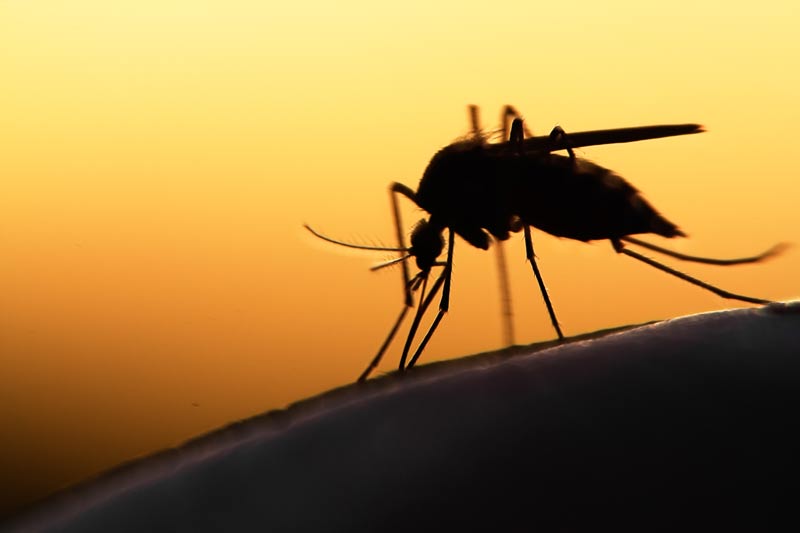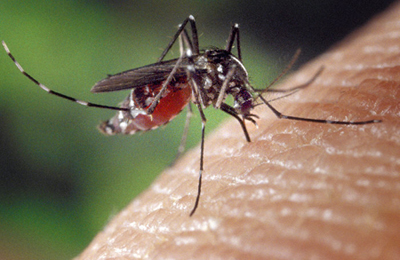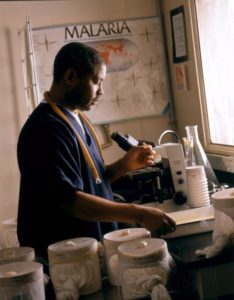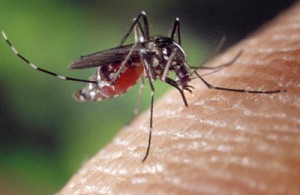
Mosquitos are the deadliest animal on earth—not because of the itchy bites they leave behind, but because of the diseases those bites can spread. Of these diseases, malaria, is the most widespread, killing 619,000 people in 2021 (1). Almost half of the world’s population live at risk of malaria (2). In humans, malaria is caused by certain species of single-cell micro-organisms belonging to the genus Plasmodium (3), which are transmitted by anopheline mosquitos.
Controlling malaria has proven challenging. Vaccines have yielded incomplete protection, and insecticides that once were successful at control mosquito populations are becoming less effective as the insects develop resistance. Finally, Plasmodium parasites themselves have developed resistance to leading anti-malaria drugs (2).
A New Weapon In The Fight Against Malaria
Approaches that target the disease-causing Plasmodium organisms—inside the mosquito and before they are transmitted to humans—could provide as effective way forward. In the past, researchers have explored leveraging genetically modified bacterium to kill or inhibit Plasmodium development within their mosquito host. However, using genetically altered bacteria makes wide-spread adoption of these techniques problematic. A recent study published in Science describes the discovery and early investigative results using a naturally occurring bacterial strain that inhibits Plasmodium spread (2). The bacteria, Delftia tsuruhatensis TC1, was isolated from a mosquito population that unexpectedly became resistant to Plasmodium infection (2).

Once the bacterium was identified as the cause of Plasmodium inhibition, the researchers tested how easily the bacteria was to introduce into naïve mosquitos and how effective it was at disrupting infection. To do this, they colonized female mosquitos by feeding them a sugar and bacterium solution and then Plasmodium-infected blood. Bacterial colonization occurred in almost all the mosquitos offered the sugar and bacterium food. Initially, bacterial colonization numbers were low, but they increased 100-fold following the blood meal.
Inhibiting Oocyte Formation Disrupts Cycle of Infection
Investigation into how D. tsuruhatensis inhibits Plasmodium infection showed that it inhibits oocyte formation within the gut, and this inhibition lasts for at least 16 days. Specifically, the inhibition is the result of a secreted compound called harmane, which is a small hydrophobic methylated b-carboline (2). When harmane is secreted in the guts of mosquitos it inhibits Plasmodium parasite development. The researchers further found that feeding harmane alone to mosquitos, or allowing it to be absorbed through direct contact produced the same results, but the inhibitory effects only lasted a few days (2).
No matter how harmane is introduced into the gut (directly or through bacterial colonization), the inhibition of oocyte formation results in a decrease in infectivity. Only one third (33%) of mice bitten by Plasmodium-infected, D. tsuruhatensis-colonized mosquitos become infected. This contrasts sharply with the 100% infection rate seen with mice bitten by non-colonized, Plasmodium-infected mosquitos (2). Further testing the researchers also showed that D. tsuruhatensis is not transferred during feeding, suggesting that that bacterium is unlikely to in introduced into mammals through colonized mosquitos.
To investigate how colonization and infection rates would correlate in a ‘real world’ environment, the researchers used a large (10 × 10 × 5 meter) enclosure that replicated the mosquitos’ natural environment. Once again, the mosquitos were colonized with D. tsuruhatensis through overnight feeding of the sugar and bacterium solution. They found ~75% of the mosquitos were colonized by D. tsuruhatensis in this time period.They also found that larvae reared in water seeded with D. tsuruhatensis experienced 100% colonization. In both scenarios, Plasmodium oocyte development was disrupted just as it had been in the laboratory-raise population (2).
Finally, the researchers found that D. tsuruhatensis colonization doesn’t occur between individuals between parent and offspring. For controlling Plasmodium, this means that inoculation with D. tsuruhatensis would require ongoing maintenance. However, it also decreases the risk of a contaminated strain being amplified uncontrollably if released, making it less risky.
Malaria mitigation and control requires a multipronged effort. Using naturally occurring, symbiotic, microbes such as D. tsuruhatensis is one approach that shows promise. There is still a lot of work to be done before this bacterium could be used outside of a controlled environment, including understanding how the bacterium might interact with other plants and animals from the same ecosystem.
References
- WHO World malaria report 2022. Accessed August 22, 2023
- Wei Huang et al. (2023) Delftia tsuruhatensis TC1 symbiont suppresses malaria transmission by anopheline mosquitoes. Science 381, 533–40.
- Website. CDC about Malaria—Biology. Accessed August 22, 2023



